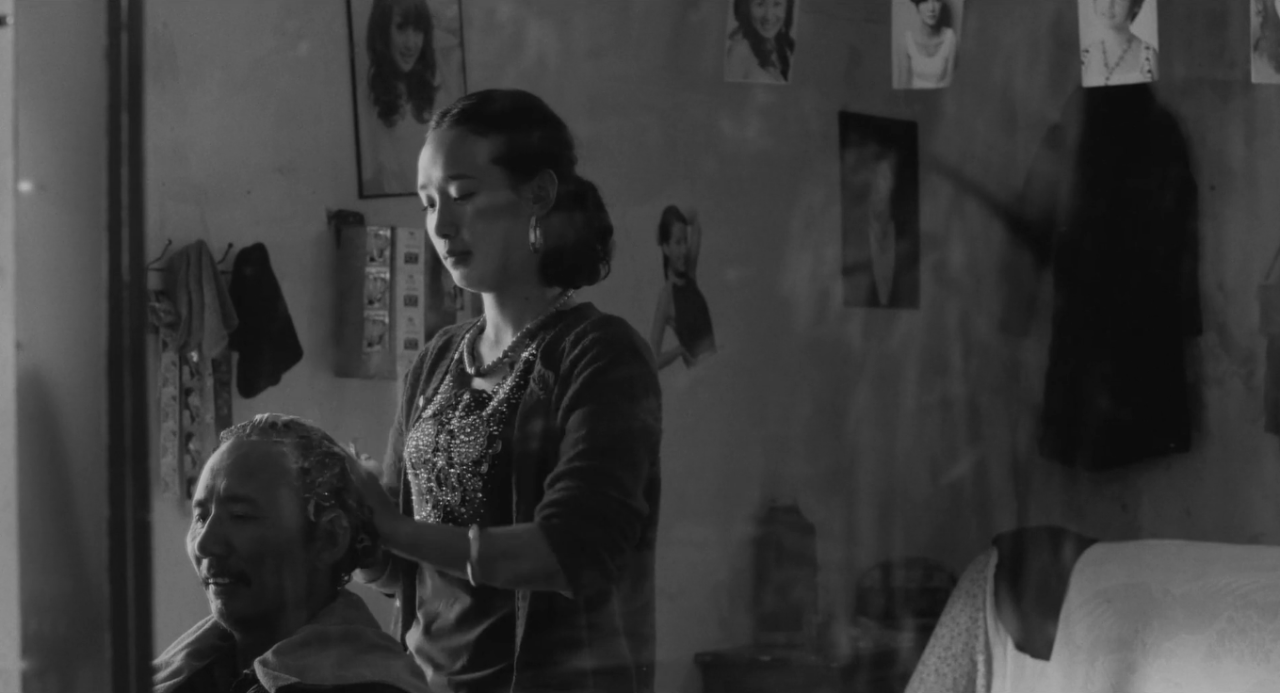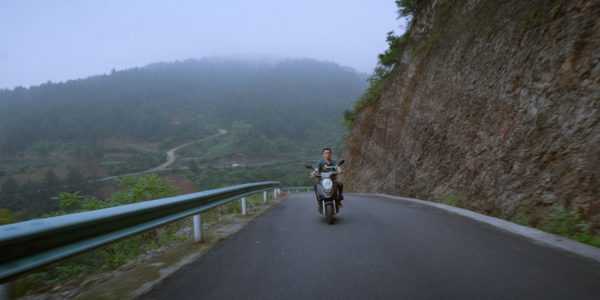Historically Unprecedented Growth
Over the course of a single year, China, by its own measure, lifted nearly 40 million people out of poverty. In 2013 alone, China’s share of the world’s extreme poor fell an astonishing 5 percentage points, from 13 to 8 percent. Between 2008 and 2011, China and India (which continues to be much poorer than China) combined to lift another 232 million people above the international poverty line, reducing the world’s poor by close to 20 percent in just three years.
In 2015, The Guardian noted that China had all but wiped out urban poverty—though the British publication was quick to insist that inequality remained a major issue for the bourgeoning superpower. The story of our time, as much as it is that of the Internet revolution, is the story of the rapid elimination of global poverty brought about, in substantial measure, by China’s breakneck economic growth (the fastest ever, in GDP terms, for a major economy) since its shift away from central planning, starting in 1978.
With Chinese society increasingly urban and middle class, film exhibition has seen its own game-changing boom in the past decade or so. By 2015, China had increased its number of screens to more than 31,000, or 80 percent of the number in the world’s largest market, the United States. For China, that meant a near seven-fold growth in just ten years. In 2015, Chinese films accounted for a little over 61 percent of the box office, with Hollywood taking much of the rest—and in a typical year, accounting for half of the top ten biggest blockbusters. Hollywood is catering to this massive new market with Iron Man 3, for example, including a special scene that screened only in China and featured recognizable Chinese stars. In 2014, Transformers: Age of Extinction, which was largely set in China and premiered in Hong Kong, went on to become the highest grossing picture in the nation’s history.
The Chinese government, nonetheless, protects its film industry by placing a quota on the number of foreign films that can be screened each year. Among mainstream Chinese entertainments, comedy tends to be favored—as a result, in part, of the government censorship that continues to impact production. Computer-generated imagery (CGI) special effects (of the sort seen in Iron Man 3 and Transformers) are also finding their way into popular entertainments, with foreign talent at times being lured to China with the industry’s larger and larger budgets. Stephen Chow’s special-effects comedy The Mermaid (2016), which opened in China and the United States this past February—and is available for purchase on Amazon—has overtaken Age of Extinction as number one at the Chinese box office.
The Mermaid is an exemplary case, and not only because it is the nation’s new box office champ. Directed by Hong Kong native Chow, who twice notched all-time box office number ones in his home territory with the banned-in-Mainland-China Shaolin Soccer (2001) and Kung Fu Hustle (2004), The Mermaid tells the story of Shan, a beautiful mermaid sent to assassinate Liu, a self-made real-estate developer, whose plan will destroy Shan’s delicate environment. Set within a fictitious, upscale urban environment, which borders the endangered coastline, Chow’s blunt discourse implicates the greedy capitalists and argues for greater ecological responsibility (in a country that has not made this a priority during its historic period of growth), while opening a space for both personal and political redemption.
The Mermaid is equally unpolished, if still funny, in its very broad comedy—crazy hairstyles; fat, middle-aged men dressed as mermaids; octopus men frying their own tentacles and the like—which Chow combines with low-tier special effects (compared to your standard Hollywood feature) and an occasional overhead stylistic flourish. The Mermaid is quintessential mass audience entertainment with a political message ripe for a changing China.
***
The Mermaid provides an ideal contrast for the six outstanding films selected for “Marginal Geographies: Independent Masterworks from China,” Museum Films’ original program of new Mainland independent cinema produced since 2010. In contrast to the fantastical spaces of The Mermaid (which was filmed in Shenzhen, a megacity across the border from Hong Kong, with a population of more than 10 million), each of the six films in “Marginal Geographies” was shot on location in either rural or small city settings. For all six, place is pivotal to the film’s subject matter—and is not incidental in the manner of The Mermaid.
Made in Tibet
Most obvious in this respect are the three films depicting contemporary life in Tibet: Pema Tseden’s Old Dog (2011) and Tharlo (2015; pictured on top) and Zhang Yang’s Paths of the Soul (2015; pictured above). The son of Tibetan nomads, and the first director to work exclusively in the Tibetan language, Pema Tseden’s two truly exceptional features consider the conflict between traditional modes of existence in the Tibetan Autonomous Region—long subjected to human rights violations from the ruling Chinese—and the people and laws governing the rural Tibetan people from afar.
In Old Dog, a breakthrough for a new Tibetan cinema, Gonpo, the middle-aged alcoholic son of an elderly shepherd, decides clandestinely to sell the family’s Tibetan nomad mastiff. Gonpo’s action, fiercely opposed by his father, is prompted by a string of local robberies of the animals, which have become extremely sought-after by China’s new urban upper class. Old Dog situates Tibet and Tibetan culture as sites of exploitation for a newly wealthy urban China.
Old Dog is a modern-day classic of humanist cinema that reinforces the art form’s role in dramatizing the contested arrival of modernity. If anything, Tharlo, Pema Tseden’s other featured work in “Marginal Geographies” is even stronger. Adapted by the director from his own novella, Tharlo opens with the title character, also a shepherd, reciting a lengthy essay by Chairman Mao to a set of bemused local police officers. A figure of the past, Tharlo has come to town to get his state-mandated ID card. To prepare for his photo, he visits a local hair salon where he develops a crush on a young hairstylist (who dreams of leaving the film’s depressing backwater). Often preferring to shoot reflective surfaces such as windows and mirrors, Pema Tseden manages to visualize—and dramatize—conflicts between the old ways of life and new in practically every frame, which collectively register the film’s small-town and mountainous rural locales in lustrous black-and-white.
As a footnote, Pema Tseden was forcibly taken into police custody this past June, and was hospitalized with injuries sustained during the altercation two days later. The police had insisted he sign a confession admitting he had “disturbed the social order.” When he refused, he was told that “disobedient” people would be detained. The director’s experience highlights the persistent human rights abuses perpetrated by the Chinese government against the Tibetan people and the degree to which the state continues to find itself threatened by the most distinctive and courageous of its independent voices. To be sure, “Marginal Geographies” is largely a program of unofficial cinema.
The third of “Marginal Geographies” three Tibetan-set films, Zhang Yang’s Paths of the Soul, is much less modernist melodrama than fictionalized ethnographic spectacle. Shot over the course of a year—at the same time he also was adapting the more epic, if less completely successful Soul on a String (2016)—across a series of breathtaking Himalayan vistas, Paths of the Soul joins a group of non-professional actors as they reenact (and endure) the physically punishing 1,200-mile pilgrimage to the Tibetan capital of Lhasa. Every few steps, Zhang’s actors drop to their hands and knees—the former covered by woodblocks—and then stretch out flat on their stomachs as they kowtow in prayer. The sounds of the woodblocks help create the film’s hypnotic rhythm, while also making Zhang’s film eminently cinematic (that is, transforming it into an experience unthinkable in any other art). It is also, as an object of cultural ethnography, one of those works that impresses the viewer with the idea that she or he could never replicate the act of religious devotion witnessed on screen by the films Buddhist devotees. Paths of the Soul is one of the year’s most substantial films about faith.
Poverty in Yunnan Province
The bordering, southwestern province of Yunnan provides the setting for the next film in the series, and the only documentary: nonfiction master filmmaker Wang Bing’s harrowing and deeply resonant Three Sisters (2012). Filmed by Wang over six months in 2010, Three Sisters follows three young girls, ages 10, 6, and 4, as they live the most meager possible existence, long ago abandoned by their mother, and “cared for,” to use the term loosely, by a father who spends most of his time traveling alone, searching for work. In fact, the three girls care for themselves under the condition of extreme poverty, which though greatly lessened in the past couple of decades, is still a reality for tens of millions in China (like these three young girls who may go years without bathing and are forced to collect dung to subside).
From his nine-hour, nonfiction masterpiece, Tie Xi Qu: West of the Tracks (2002) onward, Wang’s work shows the world the marginalized and victimized within his country: those who lost everything, in West of the Tracks, following the country’s decision to allow state-run factories to declare bankruptcy; the title character in the astonishing Fengming: A Chinese Memoir (2007), who recounts the suffering she experienced as a result of the Cultural Revolution; the institutionalized who live in squalid conditions in ‘Til Madness Do Us Part (2013); and most recently the Burmese refugees who seek passage into China in the current Ta’ang (2016). Three Sisters, however, might just represent the filmmaker’s most heart-rending subjects to date.
Opening and Closing Night Films
“Marginal Geographies’” opening-night film, Gan Bi’s debut feature, Kaili Blues (2015; pictured below) comes from China’s south. Set in the midsized Kaili City, home to the Miao people, one of China’s 55 officially designated minority groups, and to more than 120 festivals each year (which help to geographically situate Gan Bi’s work), Kaili Blues explores its rundown provincial setting—about which one character regales us with mundane facts as she practices her tour-guide script—with a consistently mobile and digressive camera.
Remarkably, in the midst of the film’s dreamlike narrative, the first-time filmmaker pulls off a 40-minute tour-de-force in the form of a single, unbroken take that follows, departs from, and then rejoins the film’s lead as he sets off on an extended journey by foot. Indebted to a set of European and Asian art-house masters including Thailand’s great Apichatpong Weerasethakul, Kaili Blues is the most formally audacious of “Marginal Geographies’” offerings. It also provides evidence that the mainstream Mainland cinema does not own the supernatural—so long as it is made to exist in the concreteness of place that Kaili Blues favors.
A close second on this count (or even co-number one) is the series’ closing night film, poet-novelist Li Hongqi’s Winter Vacation (2010), another Locarno alumnus—and the winner of that major international film festival’s top prize, the Golden Leopard. Set during the titular winter vacation in a deeply depressed and depressing corner of Inner Mongolia in the country’s near-subarctic north, Winter Vacation cycles between a set of aimless high school students and disaffected adults as they while away the seemingly interminable days in worker housing that appears to come straight out of West of the Tracks. Li adopts the world’s most deadpan long-takes as one kid professes his wish to be an orphan and another older teen rudely confesses his desire to date a stupid, average-looking girl from his nothing hometown. Winter Vacation is about as nihilistic as comedies ever come and certainly ranks among the most distinctive films in its genre in a long time. If Kaili Blues asserts a place for the fantastical in Chinese independent cinema, Winter Vacation does the same for comedy.
***
A Truly Marginal Cinema
Ultimately, genre is less indicative of the difference between government-sanctioned popular cinema (like The Mermaid) and the independent and festival-circuit work included in “Marginal Geographies,” than is their respective emphases on concrete places and marginal populations, which, in the selections for this series, combine to present a portrait of those who have been left behind or excluded from the middle-class experience of modern-day China.
The same can be said for the subjects of Jia Zhangke’s masterful, Cannes award-winning A Touch of Sin (2013)—a highlight of Museum Films’ last foray into new Chinese film, in 2014—which mapped its alienated protagonists across a distinct series of geographical settings for north to south. In a slightly more commercial mode, there is also Diao Yinan’s 2014 Berlin top prize-winner, Black Coal, Thin Ice—currently available on Netflix Instant—which stages its richly engaging police procedural narrative in the country’s economically depressed northern coal regions in the dead of winter.
Finally, there is perhaps the most singular of all new Chinese films, Ju Anqi’s mega-lo-fi Poet on a Business Trip (2015), which follows its eponymous subject as he drinks, cavorts with prostitutes, and composes verse (which appears on screen, in intervals) about the residents and places of China’s remote Xinjiang Uygur Autonomous Region. No places are more distant, and no populations more marginal than those featured in this road movie, which was released 13 years after its completion.
© 2016 Michael J. Anderson
***
Select Bibliography
Chun Han Wong, “More Than 82 Million Chinese Live on Less Than $1 a Day,” The Wall Street Journal, 15 October 2014.
Westerly Gorayeb, “Chinese Independent Film, Reborn?,” World Policy Blog, 10 August 2015.
Tom Phillips, “Tibetan director ‘injured in Chinese police custody,” The Guardian, 29 June 2016.
Xiaodong Zhu, “Understanding China’s Growth: Past, Present, and Future,” Journal of Economic Perspectives, Vol. 26, No. 4, Fall 2012, pgs. 103-124.
Linda Yueh, “Is it a Golden Age for Chinese Cinema?,” BBC News, 30 October 2014.
***
“Marginal Geographies:Independent Masterworks from China” Program
Kaili Blues | 113 minutes | Thursday, September 22 | 8 pm
Old Dog | 88 minutes | Saturday, September 24 | 5:30 pm
Tharlo | 123 minutes | Saturday, September 24 | 8 pm
Paths of the Soul | 117 minutes | Sunday, September 25 | 2 pm
Three Sisters | 153 minutes | Sunday, September 25 | 5:30 pm
Winter Vacation | 91 minutes | Thursday, September 29 | 5:30 pm
Paths of the Soul | 117 minutes | Thursday, September 29 | 8 pm












